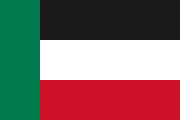Republic of Goshen
| Republiek Goosen | |||||
| Republic of Goshen | |||||
| 1882-1883 | |||||
|
|||||
| Official language | Dutch | ||||
| Seat of government | Rooigrond | ||||
| Form of government | republic | ||||
| Head of state , also head of government | Administration Chairman Nicklaas Gey van Pittius | ||||
| surface | 10,400 km² | ||||
| population | 17,000 | ||||
| Population density | 1.6 inhabitants per km² | ||||
| currency | South African pound | ||||
| founding | October 24, 1882 | ||||
| resolution | October 11, 1883 | ||||
The Republic of Goshen (dt. Also Goschen , nld. Republiek Goosen , differently formulated as Het Land Goosen , Republiek van Goosen , Republiek van Land Goosen , Land Goosen ) was a short-lived Boer republic on the southeast border of the then South African Republic in the area of today's South Africa . The name "Goshen" refers to the country of Goshen described in the Bible, between the Nile Delta and the Suez Canal .
In the early 1880s, the border of the South African Republic in this area was not yet demarcated. In 1882 there was hostility between the Barolong chief Moshette and the chiefs Mankoroane ( Batlapin ) and Montsioa (Barolong). Both sides called on Boer settlers for help, who were to receive land for settlement in return. The republic was proclaimed on October 24, 1882 by a peace treaty between Moshette and Montsioa. Nicolaas Claudius Gey van Pittius , former member of the People's Council of the South African Republic, became head of state as chairman of the administration . At that time, about 17,000 people lived in the area, including about 2500 subjects of Moshettes and 12,500 subjects of Montsioa, as well as about 2000 white settlers.
Shortly after the founding of the republic, efforts were made to unite the new state with the Stellaland republic , which was established at almost the same time and which was implemented on October 11, 1883. The resulting United States of Stellaland was annexed by the British on September 30, 1885 as the Crown Colony of British Bechuanaland .
After Montsioa had broken the peace treaty in May 1884, fighting broke out again, from which Moshette emerged victorious thanks to the support of the Boer settlers. In a new peace treaty, Montsioa had to cede his entire dominion to the Boers, only 250 km² were left to him and his tribe as a reserve.
literature
- Ignatius Marthinus Meyer: Die Republiek Land Goosen, 1882-1885 . University of South Africa, Pretoria 1930.
- H. Wichmann: Land Goosen. In: Dr. A. Petermann's communications from Justus Perthes' geographical institute. Volume 30, 1884, p. 433.
Individual evidence
- ↑ a b c d e f g H. Wichmann: Land Goosen. In: Dr. A. Petermann's communications from Justus Perthes' geographical institute. Volume 30, 1884, p. 433.
- ↑ a b c d J. A. van Zyl: The History of the Flags of South Africa Before 1900 (= SAVA Journal. Volume 4). Southern African Vexillological Association, Pinegowrie, 1995, ISBN 0-620-19798-6 , p. 43.
- ↑ Paul Heichen (Ed.): Afrika Hand-Lexikon. Gressner & Schramm, Leipzig 1885, p. 1229 ( PDF file; 48.1 MB ).


